Bruce Dowbiggin
Celebrity Owners– Fun, Yes, But The Equity Is Even Better

In case you hadn’t noticed. Celebrity Sports Ownership is all the rage. When the Ottawa Senators were for sale Ryan Reynolds, Snoop and The Weeknd were all mentioned among the bidders (that eventually went to Montreal businessman Michael Andlauer). LeBron James now holds a minority position with Liverpool FC.
Jay-Z owns part of the Brooklyn Nets, Usher a piece of the Cleveland Cavaliers while Fergie of Black Eyed Peas fame also partly owns the Miami Dolphins. Gloria and Emilio Estefan, Marc Anthony, and tennis superstars Serena and Venus Williams are owners of pro sports teams. Famously, Elton John owned Watford FC, although he’s now just an honorary chairman.
And, of course, Reynolds and Rob McElhenney used a documentary TV series that showed their Welsh Wrexham soccer team promoted to the FA’s League Two. What’s the attraction?

Clearly a little PR is always a good thing. But sports team ownership has also become a lucrative equity play. As BMO reports, “The average compound annual growth rate since the last purchase price… is 15 percent, a meaningful outperformance to the TSX and S&P. Forbes estimates the Toronto Blue Jays are currently worth US$2.1 billion or roughly C$2.85 billion.
Based on recent sports franchise transactions, expansion fees and annual estimations of franchise values by Forbes Magazine, an $8 billion enterprise value is easily defendable for the Jays’ owners MLSE (who also own the Maple Leafs, Toronto FC and Argonauts).”
It’s the same across the major pro sports leagues. The estimated average franchise value in the NFL since 2013 is $5.1B with a compound annual growth rate (CAGR) of 16 percent; in the NBA it is $2.9B with a CAGR of 18 percent. For MLB it is $2.3B with a CAGR of 12 percent; the NHL is $1.0B with a CAGR of 11 percent; while MLS is $0.6B with a CAGR 21%.
But, BMO cautions, owning a sports franchise is considered “an equity investment strategy rather than a cash flow or income play.” In other words, don’t think that ticket sales and hot dogs are going to make you rich. (Although the NHL’s salary cap, which guarantees owners’ profits is a sweet deal.) The key is sports media which is thriving despite the move to cord cutting..
Sports media rights contracts have grown in tandem with franchise valuations. Not to be ignored in the advertising growth and viewer interaction is the bear knowns as legalized sports betting. Betting companies are flooding the airwaves with commercials while bettors tune in to watch how their selections work out. The casinos and online shops have replaced lower-paying traditional advertisers who’ve dropped off.
In Canada, league or team ownership of broadcast properties is still common. For that reason the real value of those broadcast rights is often opaque. (We had some irritated pushback from Rogers and Bell for writing on this tidy arrangement in the mid 2010s, forcing some limited disclosures). Rogers Sportsnet and TSN own (via MLSE) own a stable of teams in MLB, NHL, CFL and MLS. Good luck finding out what they pay themselves for media rights.
It’s more open in the U.S. Since the New York Yankees pioneered the YES network in 2002— sparking multiple imitators in other markets—the move in the U.S. has been away from outright ownerships of regional sports networks. A number of RSNs in the U.S. are either in bankruptcy or nearing it. Digital and network sources are now absorbing these sources. ESPN, via its owner Disney, is looking to find partners for its many broadcast properties as their bottom line in general has suffered.

Still, ESPN’s legacy business generates revenue and operating income of approximately $12.5 billion and $4.0 billion in 2023. It remains to be seen what new model emerges in the U.S. to answer cord cutting and the death of conventional TV. The NFL’s experiment on Monday, having two MNF games compete on separate networks is one experiment.
In Canada’s monopolistic market, “TSN/RDS penetration rates have declined at a quicker pace than ESPN over the past 10 years. ESPN penetration has dropped from 81 percent of U.S. households in 2013 to 56 percent in 2022, while TSN/RDS penetration has decreased from 89% of Canadian households in 2013 to 49 percent in 2022.
In addition, BMO admits that cord cutting is a thing. “SportsNet subscribers have decreased -23 percent to 5.8 million over the same period. Subscriber and advertising revenues are 60 percent and 40 percent of total revenue, respectively. Since 2017, TSN revenues have increased 13 percent. TSN subscribers have decreased -29 percent to ~7.8 million over the same period.”
But! In the last five years, TSN and SN have increased advertising revenues by 13 percent and 15 percent respectively. The same figure for the top five Canadian non-sports channels (collectively) is six percent. Thank you legalized wagering in Ontario. So who wouldn’t want a piece of this action, especially in Canada?

The red flag in this surging equity market comes in the form of smaller Canadian NHL markets. The Senators sale for $950 suggests a healthy interest in owning, but the Sens sale was also tied into the new LeBreton Flats arena. Ownership or control of a Canadian arena means more than NHL games. It also includes revenue from concerts, rallies, monster-truck events etc.
Even with that can Andlauer produce a winner just two hours from the Montreal Canadiens market? Likewise, the Winnipeg Jets are desperately in need of a larger arena to replace the 15,321 Canada Life Centre. Having Canada’s richest man, David Thomson, as an owner is no guarantee of getting one. And should Thomson tire of being the saviour of a losing Jets hockey property, who in that market has C$1-2B lying around needed to fund the franchise properly?
Likewise, the Calgary Flames. Despite the political press conference this summer about as new agreement the arena that management promised by 2013 has still not seen a shovelful of dirt turned over. The latest gaffe was architect’s drawings for the rink being rejected by the NHL due to inadequate dressing-room space. Start again.
Should the rink not be available till 2025-26 will an evolving ownership group still be interested in shelling out the money to keep the Flames (and Stampeders, Roughnecks and Hitmen) operating in Calgary? And if they don’t, because losing sucks? While energy-rich Calgary has plenty of billionaires, few will want to risk the money needed to keep a competitive team in a small market.
Connor McDavid’s brilliance plasters over the same small-market crack in Edmonton. Yes, they have their new building, but can owner Darryl Katz fund the moves need to keep his stars and build a winner? Vancouver, owned by the Aqulini family, has a larger market base, but with Seattle Kraken just two hours away can they too write the cheques needed to create the first Stanley Cup winner since the Canucks entered the NHL in 1970.
If these Canadian markets do survive longterm it might have to be with foreign ownership. Certainly there is money to be made riding the equity train. But there also no guarantees that those carpetbagger owners might replicate the Montreal Expos and scoot to richer markets.
Sign up today for Not The Public Broadcaster newsletters. Hot takes/ cool slants on sports and current affairs. Have the latest columns delivered to your mail box. Tell your friends to join, too. Always provocative, always independent. https://share.hsforms.com/16edbhhC3TTKg6jAaRyP7rActsj5
Bruce Dowbiggin @dowbboy is the editor of Not The Public Broadcaster A two-time winner of the Gemini Award as Canada’s top television sports broadcaster, he’s a regular contributor to Sirius XM Canada Talks Ch. 167. Inexact Science: The Six Most Compelling Draft Years In NHL History, his new book with his son Evan, was voted the seventh-best professional hockey book of all time by bookauthority.org . His 2004 book Money Players was voted sixth best on the same list, and is available via http://brucedowbigginbooks.ca/book-personalaccount.aspx
Bruce Dowbiggin
MLB’s Exploding Chequebook: Parity Is Now For Suckers
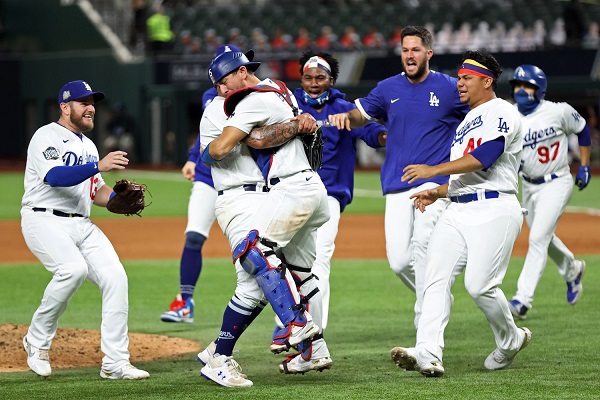
MLB has seen parity and proclaimed, “We don’t give a damn!” Okay, they didn’t say that. In fact they insist the opposite is true. They’re all about competition and smaller markets getting a shot at a title. But as the 2024 offseason spending shows, believe none of what you hear and half of what you see in MLB.
Here’s the skinny: Juan Soto‘s contract with the NY Mets — 15 years and guaranteeing $765 million, not a penny of which is deferred. Max Fried signed an eight-year, $218 million deal with the New York Yankees. Later, Nathan Eovaldi secured a three-year, $75 million contract to return to the Texas Rangers. Blake Snell (five years, $182 million with the Los Angeles Dodgers) and Matthew Boyd (two years, $29 million with the Chicago Cubs) added to the splurge.
There’s one more thing that stands out. MLB has no trouble with the financial big boys in New York, Los Angles, Texas, Toronto, Atlanta and Chicago shelling out money no small market dare pay. In the MLB cheap seats, Tampa, Pittsburgh and Miami can’t send out quality players fast enough. But MLB is cool with that, too, as those paupers get a healthy slice of TV money.
So yes, they’re all about talking parity with their luxury tax system. But to keep the TV, digital, betting and marketing lucre flowing they have to have large media markets swinging the heaviest bats come postseason. The question is, do MLB fans care the way they used to about parity? It says here they don’t. More want to seed best-on-best more often. Which is brutal but refreshing.

Their sister leagues, married to draconian salary cap systems, are still pushing parity, even as they expand beyond recognition. In our 2004 book Money Players, legendary Boston Bruins coach/ GM Harry Sinden noted, “The problem with teams in the league, is that there were (then) 20 teams who all think they are going to win the Stanley Cup and they all are going to share it. But only one team is going to win it. The rest are chasing a rainbow.”
And that was before the expansion Vegas Golden Knights won a Cup within five years while the third-year Seattle Kraken made a run in those same 2023 playoffs. There are currently 32 teams in the league, each chasing Sinden’s rainbow of a Stanley Cup. That means 31 cranky fan bases every year. And 31 management teams trying to avoid getting fired.
Maybe we’ve reached peak franchise level? Uh, no. Not so long as salary-capped leagues can use the dream of parity to sell more franchises. As we wrote in October of 2023, “If you believe the innuendo coming from commissioner Gary Bettman there is a steady appetite for getting a piece of the NHL operation. “The best answer I can give you is that we have continuous expressions of interest from places like Houston, Atlanta, Quebec City, Salt Lake City, but expansion isn’t on the agenda.” In the next breath Bettman was predicting that any new teams will cost “A lot, a lot.”
Deputy commissioner Bill Daly echoed Bettman’s caution about a sudden expansion but added, ”Having said that, particularly with the success of the Vegas and Seattle expansions, there are more people who want to own professional hockey teams.” Translation: If the NHL can get a billion for a new team, the heck with competitive excellence, the clock might start ticking sooner. After all, small-market Ottawa just went for $950.”
It’s not just the expansion-obsessed NHL talking more teams. MLB is looking to add franchises. Abandoned Montreal is once more getting palpitations over rumours that the league wants to return to the city that lost its Expos in 2005. Recent reports indicate that while MLB might prefer Salt Lake City and Nashville it also feels it must right the wrong left when the Expos moved to Washington DC 19 years ago.

The city needs a new ballpark to replace disastrous Olympic Stadium. They’ll also need more than Tom Brady to fund the franchise fee and operating costs. And Quebec corporate support— always transitory in the Expos years— will need to be strong. But two more MLB franchises within five years is a lock.
While the NBA is mum on going past 30 teams it has not shut the door on expansion after seeing the NHL cashing in. Neither has the cash-generating monster known as the NFL where teams currently sell for over six billion US. The NFL is eyeing Europe for its next moves.
The question that has to be asked in this is, WTF, quality of competition? The more teams in a league the lower the chances of even getting to a semifinal series let alone a championship. Fans in cities starved for a championship— the NFL’s Detroit Lions or Cleveland Browns are entering their seventh decade without a title or the Toronto Maple Leafs title-less since 1967— know how corrosive it can be.
Getting to 34, 36, maybe 40 teams makes for a short-term score for owners, but it could leave leagues with an entire strata of loser teams that no one—least of all networks, carriers and advertisers—wants to see. Generations of fans will be like Canuck supporters, going their entire lives without a championship.

In addition, as we’ve argued in our 2018 book Cap In Hand: How Salary Caps Are Killing Pro Sports and How The Free Market Can Save Them, watering down the product with a lot of teams no one wants to watch nationally or globally seems counter productive. The move away from quality toward quantity serves only the gambling industry. But since when has Gary Bettman Truly cared about quality of the product? So long as he gets to say, “We have a trade to announce” at the Draft, he’s a happy guy.
When we published Cap In Hand we proposed a system like soccer with ranked divisions using promotion and relegation to ensure competition, not parity. Most of the interviewers we spoke to were skeptical of the idea. But as MLB steams closer to economic Darwinism our proposal is looking more credible every day. Play at the level you can afford. Or just watch Ted Lasso. Your choice.
Bruce Dowbiggin @dowbboy is the editor of Not The Public Broadcaster A two-time winner of the Gemini Award as Canada’s top television sports broadcaster, he’s a regular contributor to Sirius XM Canada Talks Ch. 167. His new book Deal With It: The Trades That Stunned The NHL And Changed hockey is now available on Amazon. Inexact Science: The Six Most Compelling Draft Years In NHL History, his previous book with his son Evan, was voted the seventh-best professional hockey book of all time by bookauthority.org . His 2004 book Money Players was voted sixth best on the same list, and is available via brucedowbigginbooks.ca.
Bruce Dowbiggin
Bordering On Legend: Why Josh Allen Is Hero to Two Nations

Headline: Josh Allen sets NFL mark with 3 TD passes and 3 TD runs, but Matthew Stafford’s Rams hold off Buffalo Bills 44-42
Canada has no NFL teams to its name. But different parts of the country have a fervent rooting interest in a team. Often it’s because of the local American markets that have been piped in by cable TV companies. The Lower Mainland of B.C. is fertile Seattle Seahawks territory. Alberta is partial to the Denver Broncos (owned for a long time by an Albertan). Manitoba and Saskatchewan get Detroit stations on their cable but are equally invested in the Minnesota Vikings.

In the East, Quebec and the Maritimes have plenty of New York Giants (older) and New England Patriots (Tom Brady) fandom. In southern Ontario, where the locals grew up on a diet of Buffalo TV icons Irv Weinstein and Tom Joles, there is little question that the Buffalo Bills are top of mind. As many as 20 percent of the crowd on game day comes south across the Peace Bridge. TSN and Sportsnet closely cover the Bills closely.
Not so long ago Rogers thought playing Bills games in Toronto might be a thing. For reasons ranging from ticket prices to the Bills ineptitude the gamble flopped. So they gave up the plan just as the franchise’s fortunes were to take a great leap forward in the name of quarterback Josh Allen, a raw talent from Wyoming, of all places. Opinions on whether his athletic ability and size (6-foot-5, 240 pounds) would translate in the NFL were many.
After all, while his QB rivals played in the Rose Bowl or the Orange Bowl, Allen had starred in the Great Idaho Potato Bowl. Using a pick obtained from Tampa, the Bills got him seventh in the loaded 2018 draft behind more heralded prospects Baker Mayfield and Sam Darnold. He was considered the riskiest pick in the top seven. While none of the players taken before Allen have flopped, Mayfield and Arnold have wandered in the wilderness before finding success. Saquon Barkley has finally reached superstardom with a second team.

But not one of that septet has had quite the career arc of Allen. In just two years he took them to their first postseason since 1995. The next season he led them to the AFC Championship game where he lost to his future kryptonite, Patrick Mahomes and the Kansas City Chiefs. During his Buffalo tenure, he has led the team to a total of six playoff appearances, five consecutive division titles, and five postseason victories. Only a Super Bowl trip has eluded him.
But statistics don’t capture Allen’s dual-threat impact on the NFL. He’s not been alone. In our in 2022 column NFL Run/ Pass Maestros: Can’t Catch This, we wrote about the move to more mobile, improvisational QBs . Players such as Allen, Mahomes and Lamar Jackson of Baltimore, the two-time NFL MVP. Stick-in-the-pockets like Jared Goff, Kirk Cousins and Matthews Stafford are still viable threats, but it’s clear that to stay one step ahead of defensive coordinators a QB needs the option of rolling out, isolating a defender and making him choose between the run or pass.

Where it was rare for QBs to gain more than a few years running it’s now common to see six or seven QBs in the Top 50 rushers in the NFL. Currently six QBs are in the Top 50 rushers in the league. But where the competition have been race cars, Allen has been a snow plow, going through, not around, defenders.
His feats of strength would impress George Costanza’s father. Week after week he makes single-handed plays that deliver the Bills victory. His weekly highlight reel of mad dashes and bazooka-liken throws had led the Bills to six straight wins before’s Sunday’s loss. Two weeks ago it was a hook-and-ladder TD lateral in the snow from teammate Amari Cooper in which he received credit for a TD pass and a TD reception on the same play. On Sunday in Los Angeles, he added 82 yards rushing to a mighty 342 yards passing.
This has led his fans to cover their eyes as he smashes into opponents or the turf. Bills fans know that their success is untranslatable without Allen, who’s now considered the favourite for MVP with four games left. Career backup Mitch Trubisky sits behind Allen, which is like Pete Buttigieg backing up Elon Musk.
Allen has been the beneficiary of the NFL taking the target off QBs as the 2020s dawned. “In act of mercy or perhaps to juice offence, the NFL took pity on the athletic QBs. ‘It feels like the NFL is in a moment when a defender can get called for roughing the passer or unnecessary roughness simply by breathing hard on the QB,” writes Joe Mahoney of SB Nation. “It’s a reason why the career longevity for running QBs like Lamar Jackson, Kyler Murray, Jalen Hurts, Justin Fields, Josh Allen, and Taysom Hill should be much longer the career lengths of some of the previous elite dual-threat QBs’”.
This was all written before Sunday’s epic personal offence total in a losing effort against the Rams— just the third defeat all season for the Bills. At one point they trailed by 17 before rallying to lose by just two.
Perhaps the only thing holding back Allen from a title now is the game strategy of HC Sean McDermott and the coaches of the Bills— as their fans know only too well since the last-second disaster against KC in the 2022 AFC final when McDermott couldn’t kill off 13 seconds at the end of the game. Allowing the Chiefs to come back for a win and a trip to the Super Bowl.
Sunday he and his OC Joe Brady wasted a time-out at the conclusion of a monumental comeback that prevented the Bills getting a shot at a game-winning field goal. It was not the first time the seventh-year head coach had muffed game-ending strategy this season. Losses to Houston and Baltimore also featured faulty game management. Otherwise the Bills might be undefeated in 2024.
But we won’t know for a month, at least, whether that’s enough of a drag on Superman’s cape to prevent a Super Bowl appearance. For now, Bills fans in Canada and the U.S. can only marvel at what’s happened to the farm boy from rural California who is both irresistible object and unstoppable force in the same body.
Bruce Dowbiggin @dowbboy is the editor of Not The Public Broadcaster A two-time winner of the Gemini Award as Canada’s top television sports broadcaster, he’s a regular contributor to Sirius XM Canada Talks Ch. 167. His new book Deal With It: The Trades That Stunned The NHL And Changed hockey is now available on Amazon. Inexact Science: The Six Most Compelling Draft Years In NHL History, his previous book with his son Evan, was voted the seventh-best professional hockey book of all time by bookauthority.org . His 2004 book Money Players was voted sixth best on the same list, and is available via brucedowbigginbooks.ca.
-
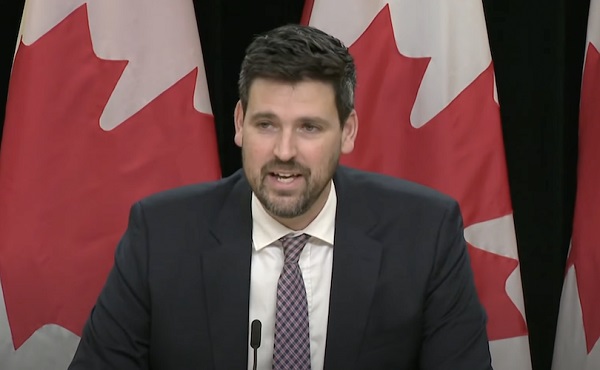
 Housing1 day ago
Housing1 day agoTrudeau loses another cabinet member as Housing Minister Sean Fraser resigns
-

 illegal immigration2 days ago
illegal immigration2 days agoDelusional Rumour Driving Some Migrants in Mexico to Reach US Border
-
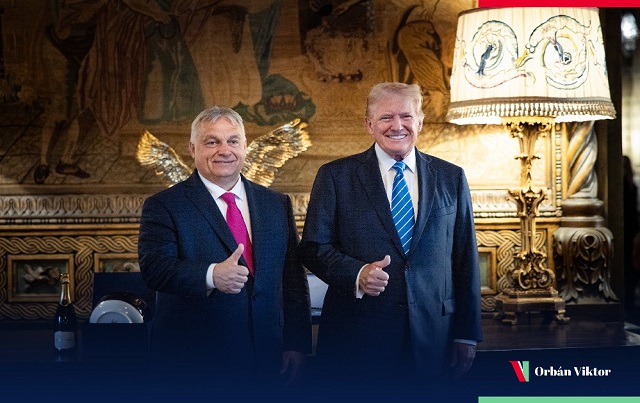
 conflict1 day ago
conflict1 day agoTrump has started negotiations to end the war in Ukraine
-

 Business2 days ago
Business2 days agoFiscal update reveals extent of federal government mismanagement
-
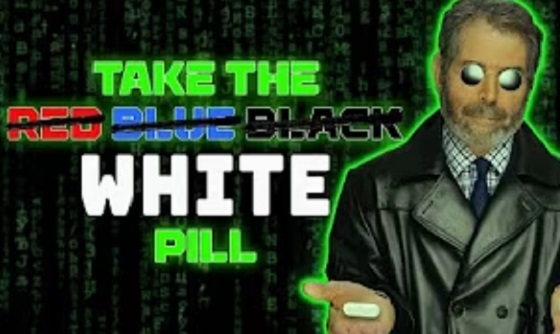
 Economy1 day ago
Economy1 day agoThe White Pill: Big Government Can Be Defeated (Just Ask the Soviet Union)
-
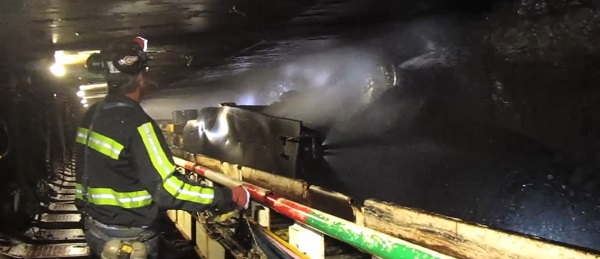
 Energy2 days ago
Energy2 days agoDig, Baby, Dig: Making Coal Great Again. A Convincing Case for Coal
-
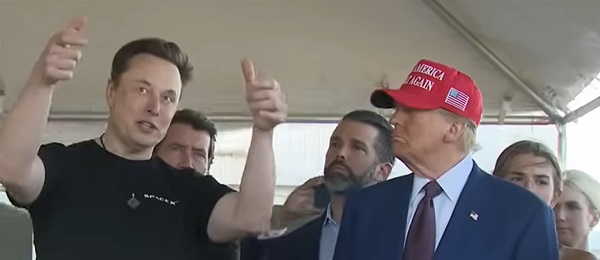
 Business2 days ago
Business2 days ago‘There Are No Sacred Cows’: Charles Payne Predicts DOGE Will Take Bite Out Of Military Industrial Complex
-

 Brownstone Institute24 hours ago
Brownstone Institute24 hours agoA Potpourri of the World’s Unexposed Scandals






